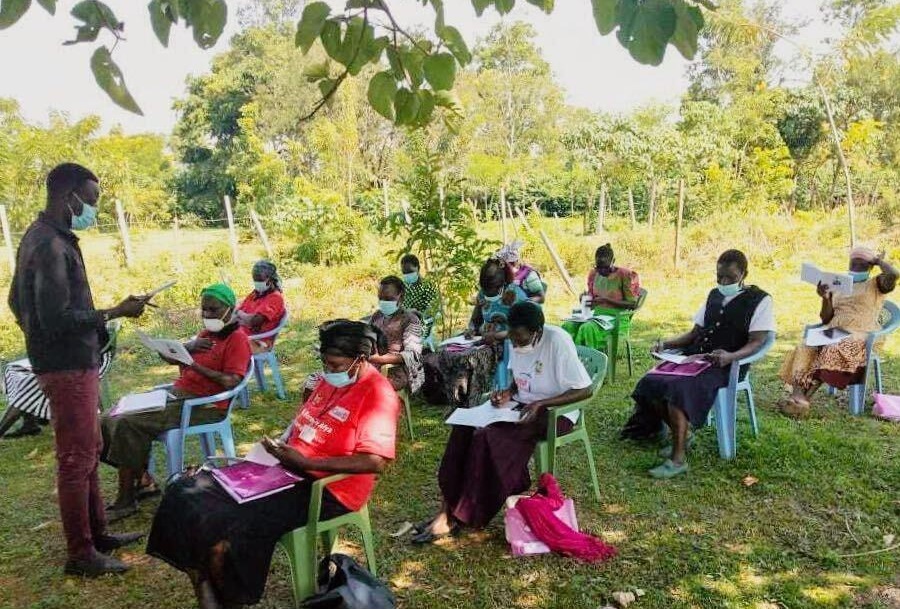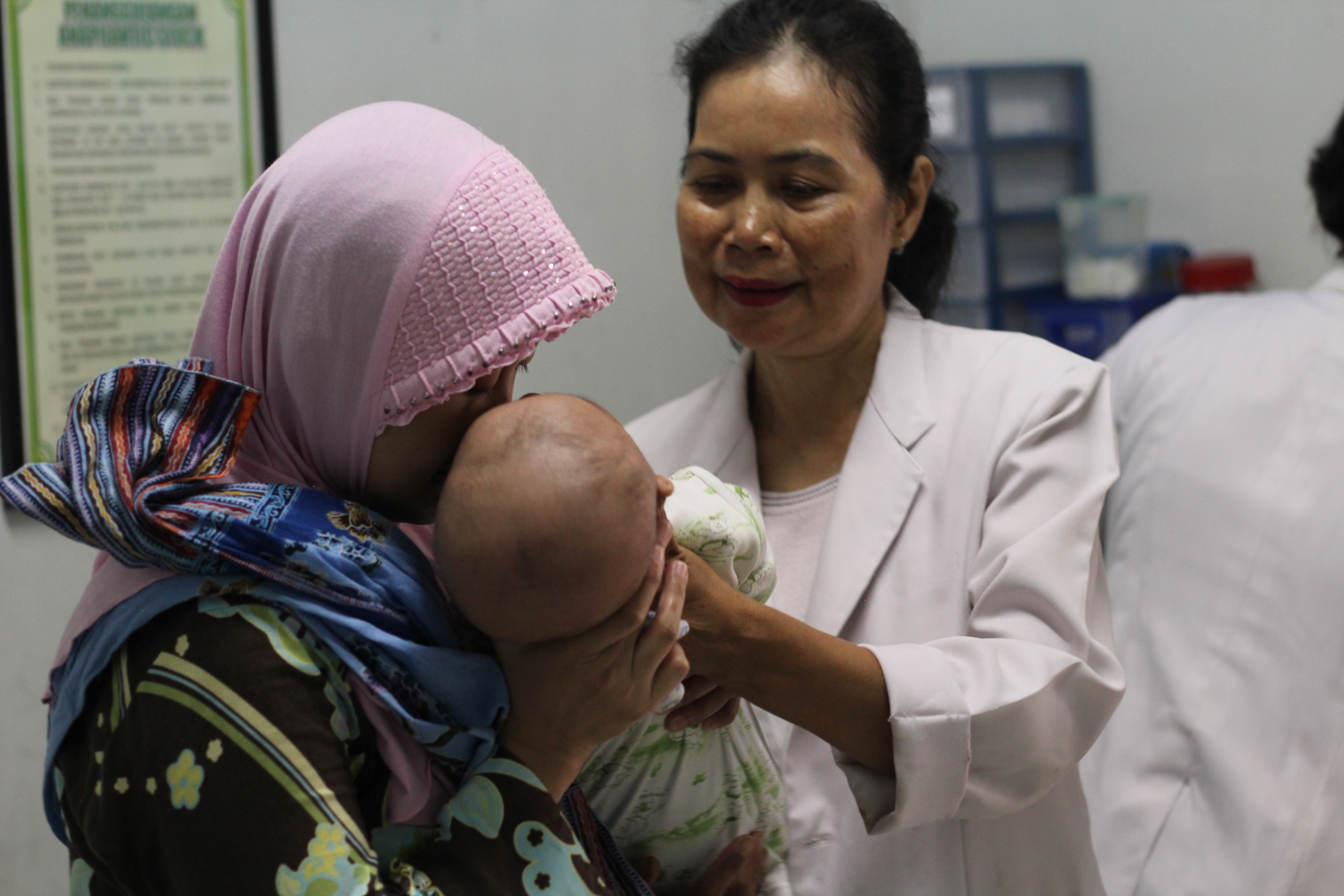The early childhood workforce has played an important role in providing healthcare services to young children and their families during COVID-19. Community Health Workers (CHWs) who act as a critical link between their communities and primary healthcare services, play an important role in preventing the spread of the virus in their communities. However, despite the increased reliance on this workforce during the pandemic, CHWs face a number of obstacles, such as insufficient personal protective equipment (PPE), limited training, and a lack of professional development opportunities, which have made it challenging for them to carry out their roles and responsibilities.
The COVID-19 Home Visiting Workforce Platform was developed to provide policymakers and program managers with resources that can be used to support the home visiting workforce in their countries during times of crises. Informed by desk reviews and key informant interviews (KIIs) with experts in the field (e.g., program directors, public health officials, CHWs), the platform highlights ten different approaches that have been used to support the home visiting workforce during COVID-19. A few of the promising approaches are highlighted below:
1. Providing the home visiting workforce with high-quality PPE ensures that they are protected as they carry out their roles and responsibilities.
CHWs are often the only source of essential services in many remote and marginalized communities. During the pandemic, these workers are in close contact with young children and their families to ensure that they have access to important health information and services. Despite this close contact, CHWs often lack the Personal Protective Equipment (PPE) needed to protect themselves against the virus and maintain the delivery of essential services.
To address this problem, the COVID-19 Action Fund for Africa (CAF-Africa) was created to supply CHWs in 24 African countries with essential PPE items (e.g., surgical masks, gloves, face shields). CAF-Africa works closely with the Ministry of Health (MOH) and one supporting non-governmental health partner to determine the PPE needs of CHWs and establish a plan for distributing these items to workers. Between August 2020 and June 2021, CAF-Africa had provided 81.6 million units of PPE to CHWs in 18 countries, thereby helping to fill a critical gap that has plagued CHWs since the beginning of COVID-19. The PPE has not only allowed these workers to protect themselves against the virus but to also continue delivering essential health services to their community.
2. Providing the home visiting workforce with reliable training, ongoing professional support, and up-to-date information on COVID-19 ensures that they can continue gaining important knowledge and skills during the pandemic.
Social distancing guidelines triggered by the virus have made it challenging for CHWs to receive consistent training and ongoing professional development support that was previously delivered in-person. Providing CHWs with COVID-19 training and professional development opportunities in a flexible and user friendly format (e.g., radio, mobile phone applications) mitigates challenges (e.g., limited internet connectivity) they may face when working in resource-constrained settings and helps ensure that they are equipped with the knowledge needed to address the virus in their communities.
One example of a program that is working to provide members of the workforce with flexible training is Health Care on Air, a distance education program for primary healthcare (PHC) nurses that is being implemented in six countries in the Pacific (Fiji, the Solomon Islands, Tongo, Tuvalu, the Federated States of Micronesia, and Vanuatu). The program uses radio to cover topics (e.g. how to use PPE, how to cope with stress during the pandemic) that allow these workers to continue providing essential services to member of their community, including children, during the pandemic
After listening to each episode, PHC nurses can receive credits that go toward the renewal of their annual nursing license. PHC nurses who received the training noted that it had helped increase their confidence in managing suspected COVID-19 cases in their communities and protecting themselves against the virus.
3. Equipping the home visiting workforce with Mobile Health (mHealth) can help inform data-driven decision-making aimed at preventing the spread of the virus
Equipping CHWs with mobile health (mHealth) technology (e.g., phone applications) allows them to contribute to the prevention, early detection, screening, and treatment of COVID-19 cases in their communities. mHealth can also be used to ensure that the information collected at the community level is used to inform regional and national COVID-19 response efforts.
In Siaya County, Kenya, for example, mDharura, an application that is used to facilitate the early detection and real-time reporting of public health threats at the community level, is being used to assist community health volunteers (CHVs) in responding to COVID-19. Under mDharura, CHVs use SMS messaging to rapidly report suspected COVID-19 cases to their supervisors, who then review and verify the reported cases. They can subsequently escalate them to the appropriate sub-county team for investigation and follow-up if warranted. The information that is gathered is then used to inform data-driven decision-making related to responding to COVID-19 at the sub-national and national levels.
Moving Forward
Although the pandemic has presented a unique set of challenges for CHWs, numerous efforts have been made to support these workers as they carry out their roles and responsibilities. The promising approaches highlighted in the COVID-19 Home Visiting Workforce Platform offer important insights for policymakers and program managers interested in further supporting the workforce in their countries. Providing CHWs with high-quality PPE, training and on-going professional support, and mHealth technology are a few examples of how resources can be deployed to support these workers and mitigate the effects of the virus in their communities. As the home visiting workforce continues to provide critical health services to young children and their families during the pandemic, we look forward to learning about approaches being implemented to support them across the globe.
To learn more about the other promising approaches, please visit the COVID-19 Home Visiting Workforce Platform’s webpage.


